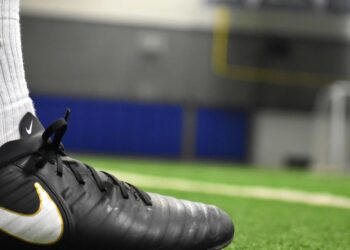A nickname for the deformed and damaged cartilage around the ear. Caused by repeatedly striking or getting punched in this region of the head, which bruises the tissue resulting in a lumpy cauliflower-like appearance. Over time these lumps result in permanent deformities that do not dissipate even when you stop getting hit on that area.
The origins of this word are pretty uncertain, but it is thought to be named because the bruised tissue resembles a cauliflower.
This gets thrown around a lot in UFC circles, where cauliflower ear can have a big influence on how well someone fights. The less cartilage you have left intact, the more difficult it will be for you to hear punches being thrown near your head. With this in mind, fighters will often try to seek out a doctor who is willing to cut away as much of the bruised tissue as possible so they can recover fully and fight at their best.
Why do ufc fighters have weird ears
Cauliflower ears are a condition that affects the ear and leads to an unsightly bump on your outer ear. This deformity is caused by injury, which can happen in many different ways. Due to this commonality, cauliflower ears can affect any sport or activity where there’s a low-pain threshold and physical contact with other people. Alternatively, it can be caused by other incidents like an ear infection or even allergies. The most common way to get cauliflower ears is by participating in contact sports like boxing, football, or wrestling.
The biggest concern is when an athlete continues to injure their ear after it’s already formed cauliflower ears. Repeated injuries can result in permanent deafness or even deformities that cause the ear to lose its shape and become very disfigured. For this reason, it’s important to seek out help if you recognize these symptoms.
Signs of a cauliflower ear injury
Many cauliflower ear injuries are not unique and can be easily mistaken for other conditions such as a bad infection or allergic reaction. If you notice the following symptoms, it’s important to seek out help from a doctor:
- Swelling of your outer ear
- A change in color around your outer ear
- Pain and tenderness where swelling is located
- Deafness in your ear
- Dulled sensations of touch or pain near your ear
- Loss of grip strength near your ear
How are cauliflower ears treated?
Cauliflower ears are very easy to treat when caught early. The earlier you seek out help, the faster you will recover. It’s important to understand that it may take several months to completely heal and for your ear to return to its original shape.
If you notice any of these symptoms, you must see a doctor as soon as possible. Your doctor will be able to drain the excess fluid from your outer ear and cut away excess damaged tissue. In some cases, there may be so much damaged tissue it can’t be completely removed. If this is the case, your doctor may suggest waiting for the skin to heal over on its own so you don’t have to live with a severely deformed ear.
 To avoid cauliflower ears:
To avoid cauliflower ears:
- Wear protective head gear in contact sports and other high risk activities
- If you notice any symptoms, seek out medical attention right away
- Avoid activities that cause pain in your ear
- Keep the inside of your ear dry at all times by braiding or tying back hair
How long does recovery take?
Curing cauliflower ears is not difficult and many cases resolve themselves within 6 to 12 months. If surgery is needed, recovery time can vary depending on the extent of the damage. The more severe your condition, the longer it will take to heal completely.
How long do cauliflower ears last?
Even if you’re an athlete, there is no reason to live with cauliflower ears forever . Unfortunately, the only way to cure cauliflower ear is surgery. Fortunately, surgery can successfully treat your symptoms in most cases by removing scar tissue and excess fluid buildup. Your doctor will be able to show you how to drain the fluid from your ear at home before it builds up too much.
Conclusion
Having cauliflower ears may make you embarrassed but this injury is completely curable if caught early enough. Seeking medical attention right away will help protect your ear from any further damage. With proper treatment and precautions, you should be able to treat your cauliflower ear in no time at all!
If you simply do not like the way it looks, there are ways of correcting this by plastic surgery. It’s also possible that once the cauliflower ear has healed, you can consider tattooing or camouflaging the area. Either way, most people can return to contact sports once their condition has improved.




 To avoid cauliflower ears:
To avoid cauliflower ears:



